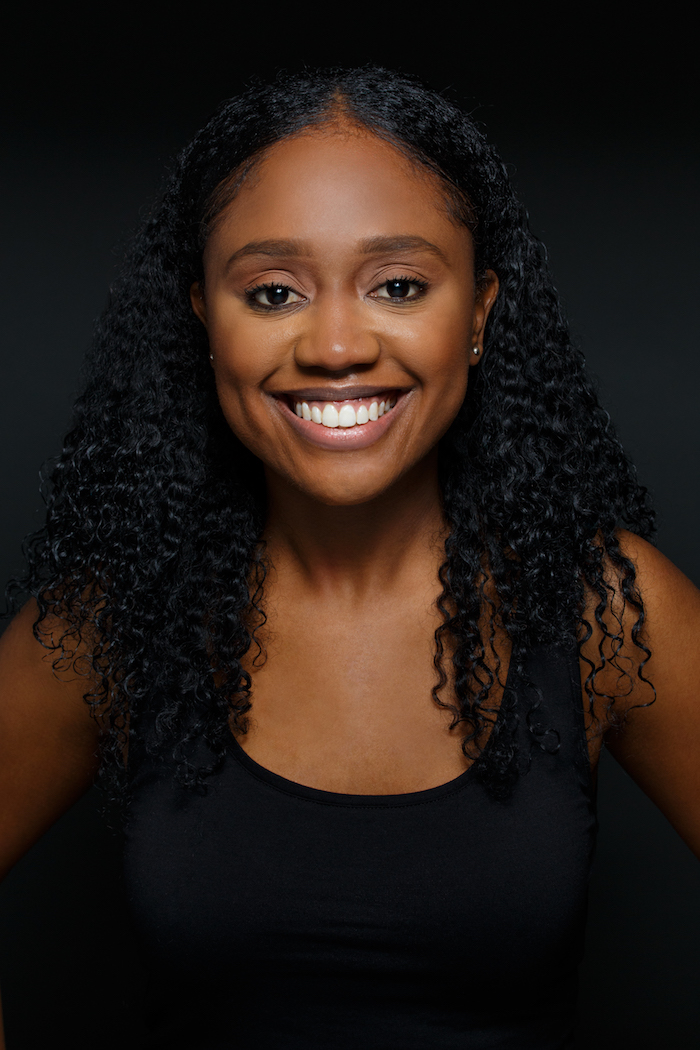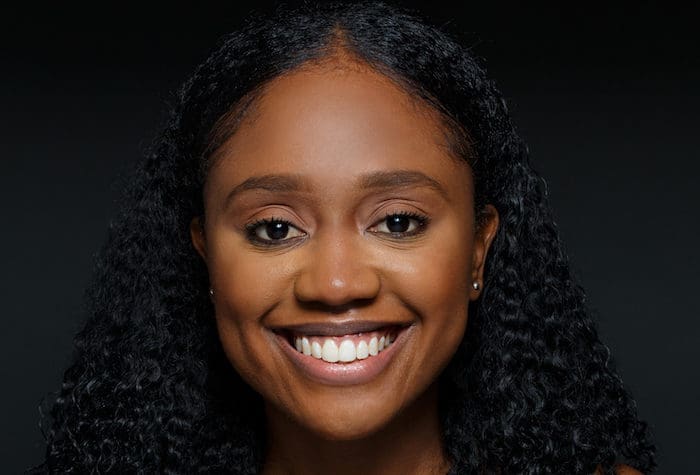 Before we announce the winners of the 2017 MyEntWorld Critics’ Pick Awards, we’re proud to present our annual Nominee Interview Series.
Before we announce the winners of the 2017 MyEntWorld Critics’ Pick Awards, we’re proud to present our annual Nominee Interview Series.
Mia Raye Smith made her Toronto Fringe Festival debut with I Am Hope, a humourous and heartwarming one-woman show about living with an anxiety disorder. Skillfully portraying 19 different characters, including her grandmother and therapist, Mia demonstrated a gift for impressions, but it was her vulnerable, genuinely affecting performance that earned her a nomination for Outstanding Solo Performance this year. Mia’s charisma kept audiences riveted as she shone a compassionate light on mental health issues in I Am Hope.
Do you remember your first experience with theatre?
Yes! I was in Godspell at the Amas Musical Theatre in high school. It was transformational because I went to high school in Queens, which gave me a chance to learn my way around Manhattan. I took singing, dancing and acting classes.
What made you to create I Am Hope?
I felt like my voice and range of talent couldn’t be displayed in any other medium besides solo performance. Auditioning only allowed me to go after one part, but I always had a desire to play multiple characters. I didn’t plan on writing an autobiographical solo show, but I remember writing material and taking it to Matt Hoverman’s GO- Solo workshop. I introduced myself to about 5 artists, and I boldly said that I’ve been struggling with my anxiety and I’m happy that I made it out of my house. I was in a supportive and encouraging space to write about my mental health struggles, and I Am Hope was born.
While writing the script, did you find it difficult to balance humour with the serious subject matter of mental health issues, or did it come very naturally?
I’m naturally a funny person, and I’ve always incorporated humour in difficult situations. I think it’s important when talking about mental health to have balance.
You play 19 different characters in I Am Hope. Do you have a favourite character to portray?
I really love them all, but I enjoy playing the therapist character.
Many of the impersonations are of family members and friends. How have they reacted to the play?
They love it! My husband gets most of the attention from the audience after my show is over, and my uncle wants more lines in the next play.
How much does the experience of performing your own work differ from working on somebody else’s script?
When you’re performing someone else’s work, you have to be married to the words out of respect to the writer. I feel freer when working on my own script because I can easily change things around without being so focused on the words.
The Toronto Fringe Festival marked your first visit to Toronto. Did you get to explore the city or the other Fringe shows during your time here? What was your favourite discovery?
I fell in love with Toronto! Toronto felt like New York’s baby sister. I was amazed at how easily I was able to navigate the transit system. After every show, I explored the city! My favorite discovery was Kensington Market. I found so many unique shops, and Rasta Pasta was my favorite place to eat.
You’ve also toured I Am Hope across the United States. What has the feedback from audiences been like? Does the reaction change from city to city?
People often tell me how brave I am to do this work. I think no matter where I go, the audience wants to continue dialogue after the show. I’m very grateful that my work sparks up a conversation, and I hope it continues into people’s homes and into the workplace.
Do you have a favourite moment or line in the play?
My favorite moment is the dance scene in the kitchen with my grandmother. It instantly takes me back to my childhood, and it’s fun.
How does it impact your performance as an actress to be working on something so personal?
When I studied Mesiner acting at the William Esper Studio, the first year of my training was about me getting to know myself; acting was only introduced after we did the ground work on ourselves. Since my play is personal, it takes away the pressure to perform and be great. I think it’s more about me telling a story than it is about how good an actress I am.
What do you think of the current conversation about mental health issues? Is the stigma lessening?
I see most of the conversations about mental health happening on social media. I think that’s a good starting place, but it’s imperative that the conversation moves offline because online conversations are short-lived. The stigma is lessening around anxiety and depression because those are the most common mental health conditions. The severer mental health disorders are still stigmatized. I’m noticing that a bad day online equates to having depression or anxiety, and that’s damaging to the people who are clinically diagnosed.
Is there anything you’d like to say to those who are currently struggling with anxiety?
The world will make room for you. No matter what obstacles you’ve faced or how bad it might look, there is space and time carved out for you to travel, find love and land your dream job. You can do all this and still have anxiety; you don’t have to hide or push it away. Accept it and the world will make room for you.
What are you doing now, or what’s your next project?
I recently received a New Work Grant from Queens Council on the Arts for my next play. I will hold a performance workshop this summer!

